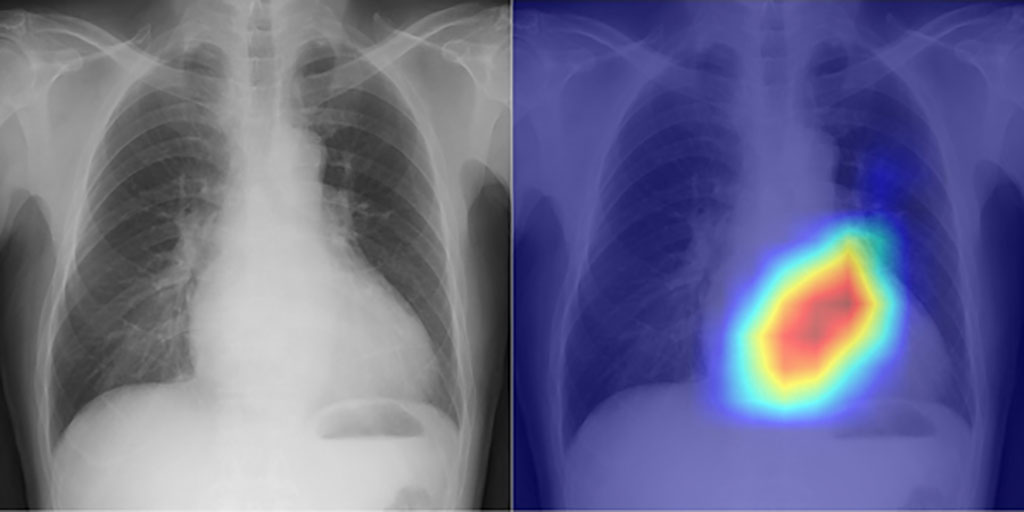Groundbreaking AI-Based Method Accurately Classifies Cardiac Function and Disease Using Chest X-Rays
Posted on 07 Jul 2023
Valvular heart disease, a leading cause of heart failure, is commonly diagnosed using echocardiography. However, this technique demands specialized expertise, leading to a shortage of proficient technicians. Chest radiography, on the other hand, is a widely used diagnostic method for identifying primarily lung diseases. Even though the heart is visible in chest radiographs or chest X-rays, its potential to detect cardiac function or disease has been largely unexplored until now. Given their widespread use, rapid execution, and high reproducibility, chest X-rays could serve as a supplementary tool to echocardiography for diagnosing cardiac conditions if they could accurately determine cardiac function and disease. Now, an innovative artificial intelligence (AI) tool uses chest X-rays to classify cardiac functions and identify valvular heart disease with unprecedented accuracy.
Scientists at Osaka Metropolitan University (Osaka, Japan) have developed an AI-based model capable of accurately classifying cardiac functions and diagnosing valvular heart diseases using chest X-rays. Given the potential for bias and resultant low accuracy if AI is trained on a single dataset, the team collected a multi-institutional dataset comprising 22,551 chest X-rays and corresponding echocardiograms from 16,946 patients across four facilities between 2013 and 2021. The AI model was trained using chest X-rays as input data and the corresponding echocardiograms as output data, enabling it to learn the features connecting the two datasets.

The AI model succeeded in precisely classifying six selected types of valvular heart disease, with the Area Under the Curve (AUC is a rating index denoting an AI model's capability with a value range from 0 to 1—the closer to 1, the better) ranging from 0.83 to 0.92. The AUC was 0.92 at a 40% cut-off for detecting left ventricular ejection fraction—an essential metric for monitoring cardiac function.
“It took us a very long time to get to these results, but I believe this is significant research,” stated Dr. Daiju Ueda from Osaka Metropolitan University who led the research team. “In addition to improving the efficiency of doctors’ diagnoses, the system might also be used in areas where there are no specialists, in night-time emergencies, and for patients who have difficulty undergoing echocardiography.”
Related Links:
Osaka Metropolitan University














